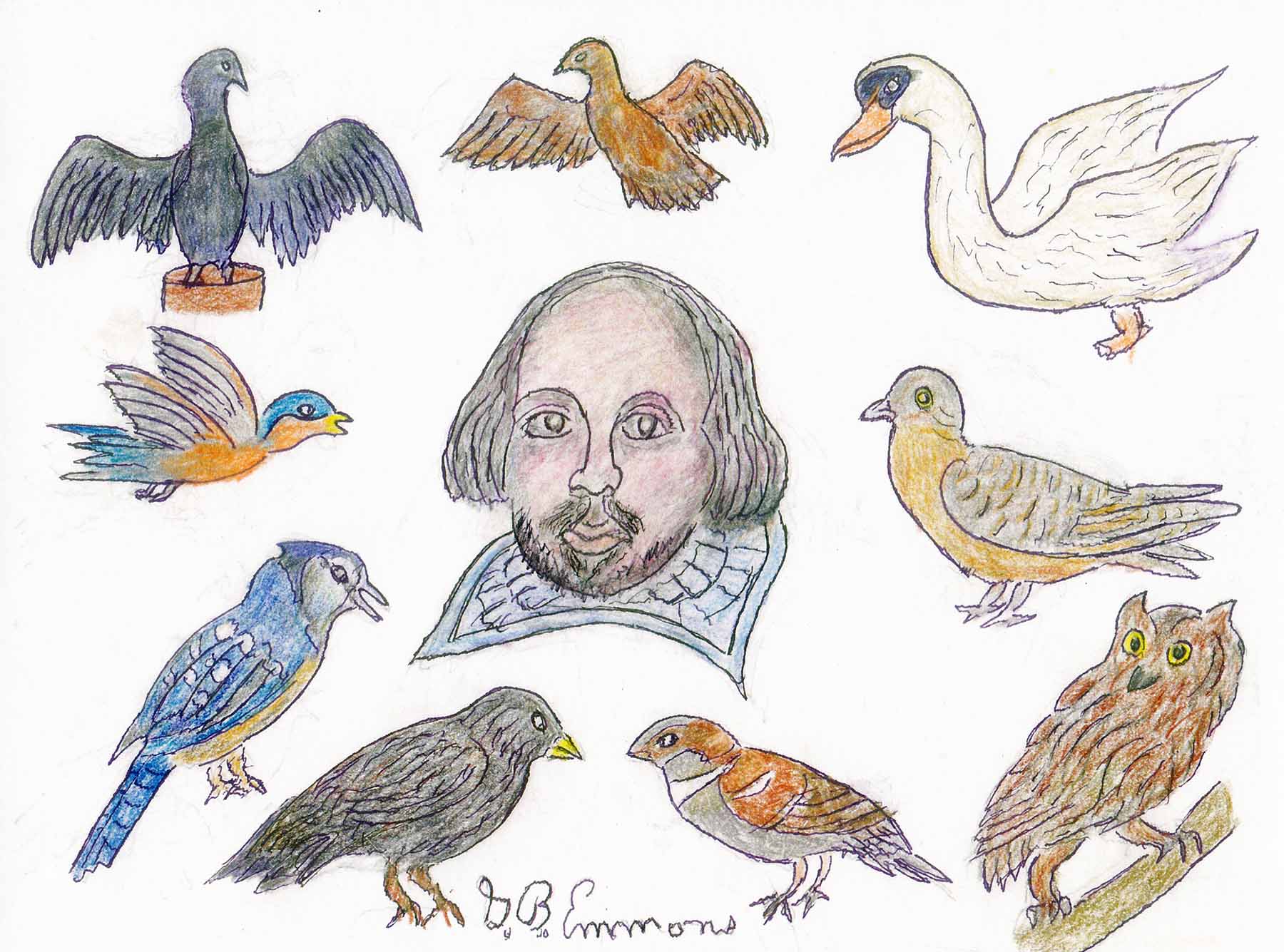Some sixty species of birds have their place in Shakespeare’s plays and poetry, esoteric figures for the many moods and meanings within the imaginative human drama of his mind.
Shakespeare knew his birds well; and today, after some four hundred years, Shakespeare’s acumen is confirmed by the modern-day ornithology of Audubon behavioral classification of flocks. Let’s begin with two of the peskiest examples of bird behavior: the house sparrow and European starling.
Victorian bird enthusiast Eugene Schieffelin imported these non-natives into Central Park, New York in 1890. He was a member of the American Acclimatization Society who wanted to introduce birds from Shakespeare’s old world of Europe into the new nation of America.
The starling was used only once by the Bard in his play Henry IV. Unlike the play, however, by 1929, they had adapted so well here after Schieffelin’s introduction that they soon numbered in the millions and were labeled invasive. They are even blamed for causing a plane crash in 1960 by clogging the engines over Logan Airport; this mishap is still known as the worst bird strike in U.S. aviation history. Starlings also invaded other songbird nests to the detriment of the popular bluebird population.
The house sparrow in the play Henry IVwas not quite as bad, but it still became the most widely distributed non-indigenous bird in America as well as around the world.
In the Audubon classification of bird flocks, a group of starlings today is sometimes labeled an ‘affliction’ and a group of sparrows is a ‘quarrel.’
Our Buzzards Bay cormorant’s English cousin is portrayed in Richard IIas having a very voracious appetite. This gluttonous character image lives on to this very day, and consequently, one of the titles of a cormorant gathering is called a ‘glut.’ His coastline companion, the swan, however, is an opposite symbolic figure of beauty and tranquility. Dramatically, the mythical swan is portrayed singing its death song when preparing to die.
Another bird song of romantic emotion is portrayed in Romeo and Julietby the nightingale, a cousin of our meadowlark. Their group chorus is appropriately (and exultingly) classified as an ‘elation.’
The blue jay around our backyard bird feeders may be a very colorful figure, but it is also an extrovert showoff, especially when perceiving that things are not to his liking. In Shakespeare’s play Cymbeline,he is properly painted as a gauntly dressed person, and to Audubon a flock is a ‘scold’ to emulate its unpleasant demeanor.
The dove was first seen as a winged spirit of the Biblical dove with the landfall promise of a laurel leaf in its mouth for creatures on Noah’s Ark. The Bard’s connotation of the dove has deity significance, as the turtledove rules supreme in King Learsymbolizing a living emblem of love and consistency.
The works of Shakespeare continue to inspire us to this day, just perhaps not as ‘invasively’ as the winged spirits of the Bard’s classics.
By George B. Emmons
